Fatal Friends, Deadly Neighbors Read online
Page 19
Things didn’t get better in Portland. Becky suffered a miscarriage, and the couple continued to grow apart. She was so young when she married and everything had happened too fast. Becky never wanted to hurt anyone’s feelings and everyone around her had seemed to be urging her to marry Evan. Although it wasn’t easy, she tried her best to keep believing in him as he hopped from job to job.
Although Becky lost her baby, her sister Mary delivered a boy, Matthew,* in April 2005. Becky told Evan that she needed to go to Missouri to help with the new baby, and he insisted he would drive her there. She demurred at first, but finally agreed that they would drive back east together. He left her with Mary and Doug Loehner and her parents and drove back to Oregon.
It wasn’t long before Becky called Evan, and she was crying. She told him that they should just “let their marriage be.”
But Evan wasn’t ready to let her go. He got another low-wage security job, this time at a retirement residence in Oregon. He told Becky he was hoping to become a police officer. With his brother an often-promoted DEA agent, the idea of a job in law enforcement appealed to him.
Evan managed to persuade Becky to come home and try again. He even drove all the way back to St. Joseph and picked her up. They returned to Oregon but stayed only a short time. They moved next to Philadelphia.
No one can ask Becky Zahau how she felt about their frequent moves because she is gone forever. Her sister Mary knew that Becky didn’t want to hurt Evan, but that she wasn’t happy with him.
Six years later, Evan told detectives he thought that things were “okay” between Becky and himself, but that he’d suspected Becky had begun seeing another man.
“After a month,” Solanev said, “I said I was done. I moved to Colorado Springs, got a job at the Air Force Academy, and I started dating a girl there.”
When California investigators asked him how Becky had felt about that, Evan Solanev said that she found out he was with another woman and phoned him. “She said she knew how I must have felt when I found out she was dating someone else. She asked me if she could come back to me and we’d try one more time,” he recalled.
Perhaps she did. He may have been the one who suggested a reconciliation. At any rate, she did come to Colorado Springs, and they stayed together for another two and a half years.
In March 2008, the couple moved once more—this time to Scottsdale, Arizona. Becky got her job working as a nurse/surgery assistant for a laser eye surgeon there. Evan applied to become a police officer in Phoenix, but he wasn’t hired. He decided to go back to school and aim for a career in health care. He thought he might become a registered nurse.
Becky bought a modest house in October 2009 in her own name. Solanev would recall that he believed his wife was again seeing someone else. She may have been. Becky had stayed with Evan for seven years, a period where they lived a peripatetic lifestyle across America. She was a trained surgical assistant, but his career goals changed continually, and their frequent moves gave them no sense of roots at all.
She was also far away from her family in Missouri.
Some people who knew them whispered that she had married Evan to obtain her citizenship papers, although her family doesn’t believe that. It did not, however, seem to be a happy union. Becky had given in to Evan’s pleas to come back to him so many times, but things had never changed. They were still unsettled. Evan had suggested that they buy the house, but she paid for it. He wanted to give her a reason to believe they had finally made a permanent commitment.
But it wasn’t enough. And it was too late. Becky was the one with the steady job and the one who had to make the mortgage payments.
As much as she had tried to keep her marriage together, Becky was attracted to other men—older men, more exciting men who seemed to have their lives in order and were actively achieving their goals. She was still very young, and very beautiful. As he turned thirty, Evan was a perpetual student, working at mostly minimum wage jobs.
As he talked to the San Diego detectives, Evan recalled becoming “a Christian” in April 2009, and giving up alcohol, cigarettes, and any drug use. Since he had been so connected to the church more than five years earlier and even a “youth minister,” his acceptance of Christianity in 2009 seemed strangely after the fact.
It was inevitable that Becky and Evan Solanev would separate. That happened in Arizona. He began nursing school in January 2010, and they no longer lived together.
“She didn’t file for divorce,” he said, “so I did—in 2010.”
Nevertheless, Evan said that he and Becky stayed in close contact. Their divorce was final in February 2011. Becky took Ocean, their Weimaraner, with her.
“Ocean was really my dog,” Evan said.
After they were divorced, Becky lived for a short time with a man she met in Scottsdale. But then she met Jonah Shacknai. He was everything that her ex-husband was not. Jonah Shacknai was handsome, rich, and dynamic.
Evan recalled one incident where he encountered another man at Becky’s Arizona home and the police were called. He did not give the man’s name. It might have been Jonah; it could have been the man Becky dated before Jonah. Evan wasn’t sure.
“She came outside and told them [the police] there was some contention between us, but it was only yelling—no physical assaults or anything like that,” Evan said calmly.
“Do you know Jonah?” a San Diego investigator asked in the summer of 2011.
It was clear that Becky’s ex-husband didn’t like Jonah.
“I know him,” Evan said evenly. “My stepmother worked for him in Scottsdale. He’s rich. I suspected when Becky went out on her ‘girls’ night out’ evenings, she was really with him. She just didn’t want to tell me. It made me angry.”
“Do you hate Jonah?”
“No,” Evan said. “But I read where his ex-wife sold their house in Arizona for the highest price in Scottsdale history. I wanted to know how rich he was. I knew then I could never get her back. She wouldn’t give me her address. I knew she’d quit work, so how could she get by and pay for her place?”
Evan Solanev was just shy of becoming “a person of interest.” He had lost Becky to Jonah Shacknai and he certainly sounded jealous of Jonah. But Evan insisted he had never been to Coronado, and he had witnesses who saw him at his gym in Arizona on the early morning of July 13, 2011.
“I didn’t even know Becky was dead until somebody from CBS called me on Thursday—July 14. Then the media called me all day. They even called my father and my aunt. When I heard, I basically had a panic attack.”
Solanev said he had no idea where Becky and Jonah lived in California; when CBS called him with the news of her death, he said he thought that she’d died in Scottsdale.
“What do you think happened to Becky?” San Diego sheriff’s detective Todd Norton asked.
“I’ve heard the news. Adrian from CBS told me that she was found in a common area—that she was bound and hanging—”
He hadn’t really answered the question, and Norton pressed further. Was it possible that Becky had committed suicide, he asked?
“No!” Solanev said that there no way his ex-wife would have taken her own life. “We’ve been through a lot—and she’s had a lot of pain in her life. She dealt with it. She loved life. She would never commit suicide. I’ve always felt she would come back to me if she needed to.”
“Was she too naïve for this world—too trusting? What if she lost everything, the money—whatever—?”
“She’d dust herself off and get a job. She had family! She always had me!”
The investigators told Solanev straight out that he was on the “suspect board” of six people. They had already cleared other possible suspects, and they reminded him that he had had an eight-hour “window to commit murder” between his classes at Scottsdale Community College and the time he was seen in the gym the next morning. It was possible for him to have caught a flight, confronted Becky, strangled her, and managed to be back in Scottsdal
e by early the next morning.
But not likely.
“Any reason you’d want to hurt Rebecca?”
Evan shook his head and began to sob at the possibility that she would have killed herself.
“Do you think you were obsessed with her?”
Evan shook his head. “I don’t think so. Yeah, I know I put her on a pedestal. She was the greatest thing there ever was. Even with the divorce, I didn’t think she’d never come back to me.”
In the end, although Evan Solanev may well have been obsessed with Becky Zahau, further investigation strained credulity to find him jealous enough to have flown to Coronado to kill her, and then manage to get back to Arizona in time to work out at his gym at 5 A.M..
Every connection would have had to mesh like clockwork. A flight delay. Bad weather. Headwinds. Tailwinds. Anything could have messed up such a plan.
* * *
All of the likely suspects were being eliminated. Or almost eliminated. San Diego area newspapers, television news shows, radio talk shows, and online outlets continued to be peppered with comments from the general public who demanded answers. Some of the calls, letters to the editors, and posts sounded ridiculous, as if they emanated from “crime experts” who hadn’t thought things out. Some were comments from citizens heartsick at the tragedy of two deaths. There were also views from people who seemed to be on the “inside,” either because they knew the principals or because they were employed as psychiatrists, psychologists, or law enforcement professionals, comments obviously written by experts in forensic science, murder, suicide, and human behavior.
No one seemed disinterested in what had happened to Max Shacknai and Rebecca Zahau.
Some were sympathetic to Becky, some to Jonah, and some were full of the kind of heedless sarcasm employed by those who hide behind anonymous screen names.
Most Internet posters doubted that Becky Zahau was a suicide. Many of their posts and questions were similar. One wrote:
Three criteria: motive, opportunity, and ability, are considered about suspects in any criminal investigation.
Who had the desire to injure or kill Ms. Zahau?
Who had the opportunity to get close enough to actually cause her harm?
Who had the ability [physical] to actually cause her harm and hang her?
The truth was that no one, except an actual killer—if, indeed, there was one—knew what had happened. But the eager Internet posters of San Diego County were consumed by the possibilities.
One thing was certain: everyone in the San Diego area had questions and opinions. Ironically, the sheriff’s investigators were asking themselves the same questions.
Nothing fit.
Several citizens commented on how hard the San Diego detectives were working. And that was true. They were losing sleep and time with their families, only to find themselves at yet another dead end.
And then, on September 2, just seven weeks after Becky died, Sheriff Bill Gore announced a press conference. He told the mass of reporters who gathered that his department was closing the Rebecca Zahau investigation because they had determined she was, indeed, a suicide.
Many people were shocked, the Zahau family most of all. Giving several interviews to the media, they made it clear that they would not stop in their quest to find out the manner of Becky’s death. A few weeks later, on September 16, 2011, Jonah Shacknai publicly agreed that the case was nowhere near over, and he, too, called for further investigation. He was still reeling over the loss of his “golden son,” and concerned about his girlfriend’s death.
Chapter Eleven
In desperation, Becky Zahau’s family contacted Anne Bremner in Seattle.
After she was approached by Becky Zahau’s sister Mary in the fall of 2011, Anne did some initial research on Becky’s alleged hanging death. Now she agreed to donate her legal experience and education to help the Zahau family find out just what had happened to Becky during the dark hours of July 13.
Another familiar name in the justice system stepped up to offer his services on the strange death in Coronado. Chicago private investigator Paul Ciolino is a legend. Dan Rather once called Ciolino “one of America’s top five investigators.” Ciolino, who looks like a man that Central Casting would suggest for the role of a tough cop, has received dozens of awards for his expertise, including International Investigator of the Year. He lectures to prestigious universities from Yale to Northwestern to Columbia.
His topics include investigative ethics, debunking “experts,” child homicide, sexual abuse, repressed memories, and death penalty investigations.
Most impressive, perhaps, is the fact that Ciolino has helped free five innocent men from death row. He also obtained a shocking videotaped confession from a double murder suspect.
Like Anne Bremner, Paul Ciolino has worked many infamous cases, including the heartbreaking murder of two-year-old Caylee Anthony in Florida. Ciolino, too, was doubtful about the San Diego County Sheriff’s Department’s official decision to close the investigation into the manner of Rebecca Zahau’s death so soon. He joined the team dedicated to find answers to what most people felt was a continuing and tragic puzzle.
* * *
Although the postmortem exam of Becky’s body had been remarkably thorough and detailed, Paul Ciolino and Anne Bremner studied Dr. Jonathan Lucas’s report and questioned some of his conclusions. Becky had had many scratches, cuts, and contusions, and the pattern of lividity on her back rather than on her lower legs seemed odd.
Fortuitously, Becky’s body had not been cremated; she was buried in St. Joseph, Missouri, near her family. Although it was excruciatingly painful for them, they agreed to consider having her body exhumed for a second autopsy. For Mary Loehner, the answer came with her belief that her sister Becky had never really rested in her grave, and never would rest if she wasn’t vindicated.
Not much time had passed—only a few months—and she had been embalmed. There was a fairly good chance that Rebecca Zahau’s body was in essentially the same condition that it had been when she was buried.
There are only a handful of esteemed forensic pathologists in the United States, and they are much sought-after by those dealing with seemingly unfathomable cases. Dr. Michael Baden is one. Baden is the former chief medical examiner of New York City and now works for the New York State Police. As a board-certified forensic pathologist for forty-eight years, he has worked on or testified in a number of headline death cases, including David Carradine, Chandra Levy, Sunny von Bülow, and Caylee Anthony.
Perhaps the most experienced of all is Dr. Cyril H. Wecht, who has been a board-certified forensic pathologist for more than fifty years. He has personally conducted more than 17,000 autopsies and consulted on another 37,000 death cases. He, too, has testified as an expert witness in trials all over the world.
Wecht is a past president of the American Academy of Forensic Sciences, is on the board of directors of the National Association of Medical Examiners, and, among many other boards dealing with questions of mortality, is a chartered diplomate of the American Board of Disaster Medicine. He is also an attorney in his home state of Pennsylvania.
Along with his coauthor, Dawna Kaufmann, Dr. Wecht has written several bestselling books on both unknown mystery deaths and those of deceased celebrities such as President John F. Kennedy, Anna Nicole Smith, Sharon Tate, and JonBenét Ramsey.
Either Dr. Baden or Dr. Wecht could make a powerful advocate for a death other than suicide in Rebecca Zahau’s case—if they disagreed with Dr. Lucas’s conclusions. Anne Bremner had worked with Cyril Wecht before, however, and she approached him about performing the second postmortem exam of Becky Zahau.
Her family would find it difficult to pay for this procedure, but providentially, Dr. Wecht chose to do this autopsy for no charge—if Becky’s family agreed to have her body exhumed and sent to his offices in Pittsburgh. Dr. Phil McGraw of television fame was also puzzled about the facts behind Becky’s death, and he stepped in to pay for t
he exhumation and transportation.
As a death investigator, Wecht was most concerned with the scientific findings at autopsy, but he always sought to find out the circumstances surrounding the demise of his subjects. By weighing the two views, one medical and one anecdotal, he found he could get a fully dimensional grasp of what could have happened.
* * *
In November 2011, four months after Rebecca Zahau died, Dr. Wecht performed a postmortem exam. There were certain things he would not be able to do because her body had been embalmed. But the first autopsy, performed by Dr. Lucas, had included tests to determine if she had any alcohol or drugs in her system at the time of her death. And, of course, lab reports came back that she had neither. As a health fanatic, Becky had eschewed both.
After he finished the postmortem exam of Becky Zahau, Dr. Wecht was asked if he thought Becky had died from strangulation caused by the blue T-shirt that had been wrapped around her neck three times, or in some other fashion that differed from the hanging diagnosis.
“My reply is that when there is so much internal damage to the neck structures, it’s not always possible to differentiate a pre-hanging strangulation from a staged hanging. Ms. Zahau’s body showed substantial damage to her neck. Her hyoid bone—the small U-shaped cartilage beneath the jawbone—was broken, but there were also hemorrhages in the underlying muscles down to the fractured cricoid cartilage, the first cartilaginous ring beneath the Adam’s apple. Yet, the rope was above that level. These are the kinds of injuries that can be attained from a forcible, manual strangulation.
“There was a total absence of any injury posteriorly,” Wecht continued. “The cervical vertebrae—the first seven vertebrae in our spinal column beginning at the base of the skull—showed no damage, either by way of fracture or dislocation. Also, there was no damage to the delicate muscles, ligaments, and tendons that lie on the front, back, and sides of the vertebral column. There was all that damage and force in the front of her neck, and not even one drop of blood or tear or disruption of any soft tissues in the rear.

 Too Late to Say Goodbye: A True Story of Murder and Betrayal
Too Late to Say Goodbye: A True Story of Murder and Betrayal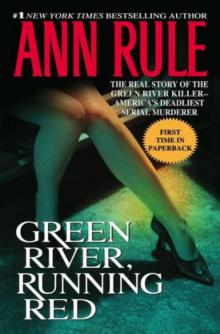 Green River, Running Red
Green River, Running Red Bitter Harvest
Bitter Harvest Dead by Sunset: Perfect Husband, Perfect Killer?
Dead by Sunset: Perfect Husband, Perfect Killer?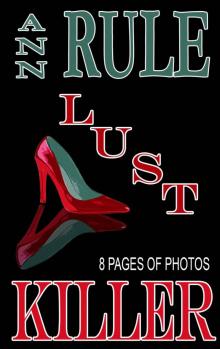 Lust Killer
Lust Killer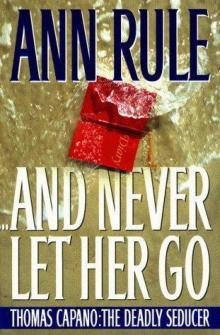 And Never Let Her Go: Thomas Capano: The Deadly Seducer
And Never Let Her Go: Thomas Capano: The Deadly Seducer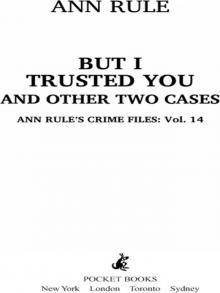 But I Trusted You and Other True Cases
But I Trusted You and Other True Cases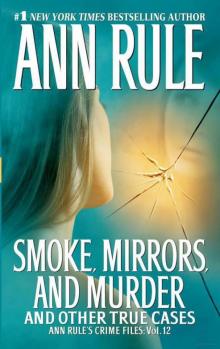 Smoke, Mirrors, and Murder and Other True Cases
Smoke, Mirrors, and Murder and Other True Cases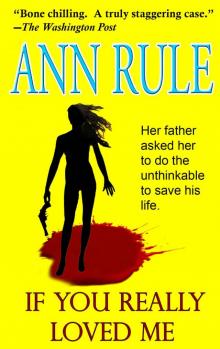 If You Really Loved Me
If You Really Loved Me Kiss Me, Kill Me and Other True Cases
Kiss Me, Kill Me and Other True Cases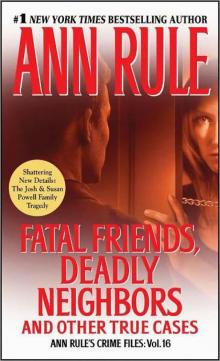 Fatal Friends, Deadly Neighbors and Other True Cases
Fatal Friends, Deadly Neighbors and Other True Cases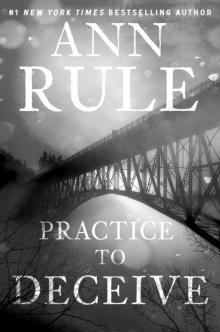 Practice to Deceive
Practice to Deceive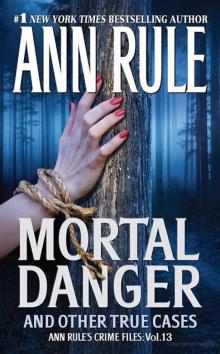 Mortal Danger and Other True Cases
Mortal Danger and Other True Cases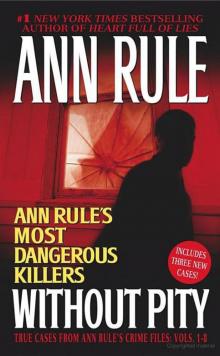 Without Pity: Ann Rule's Most Dangerous Killers
Without Pity: Ann Rule's Most Dangerous Killers Everything She Ever Wanted
Everything She Ever Wanted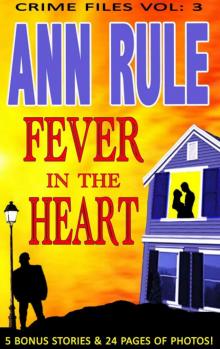 A Fever in the Heart and Other True Cases
A Fever in the Heart and Other True Cases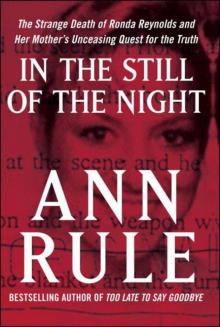 In the Still of the Night
In the Still of the Night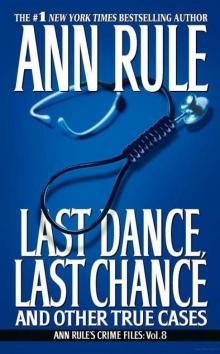 LAST DANCE, LAST CHANCE - and Other True Cases
LAST DANCE, LAST CHANCE - and Other True Cases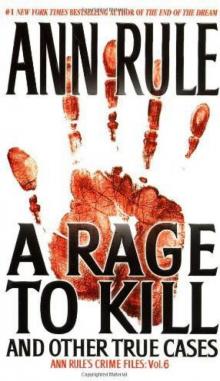 A Rage to Kill
A Rage to Kill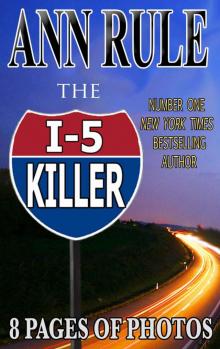 The I-5 Killer
The I-5 Killer The Stranger Beside Me
The Stranger Beside Me Everything She Ever Wanted: A True Story of Obsessive Love, Murder, and Betrayal
Everything She Ever Wanted: A True Story of Obsessive Love, Murder, and Betrayal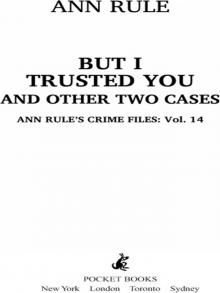 But I Trusted You
But I Trusted You Without Pity
Without Pity Kiss Me, Kill Me
Kiss Me, Kill Me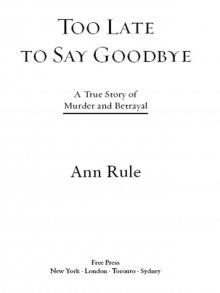 Too Late to Say Goodbye
Too Late to Say Goodbye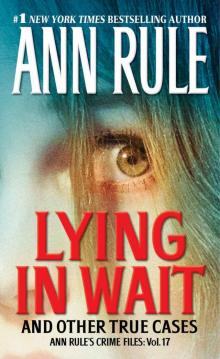 Lying in Wait
Lying in Wait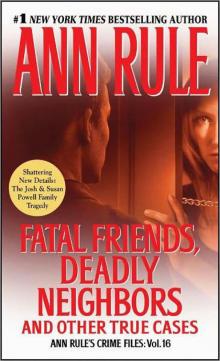 Fatal Friends, Deadly Neighbors
Fatal Friends, Deadly Neighbors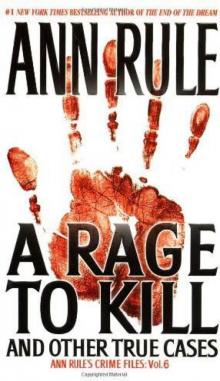 A Rage to Kill: And Other True Cases
A Rage to Kill: And Other True Cases And Never Let Her Go
And Never Let Her Go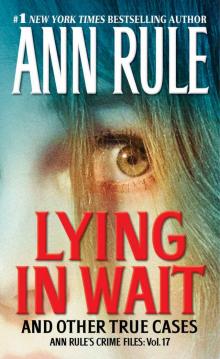 Lying in Wait Ann Rule's Crime Files Vol.17
Lying in Wait Ann Rule's Crime Files Vol.17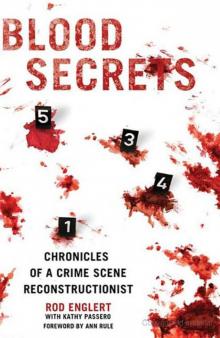 Blood Secrets: Chronicles of a Crime Scene Reconstructionist
Blood Secrets: Chronicles of a Crime Scene Reconstructionist No Regrets
No Regrets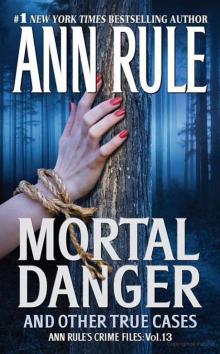 Mortal Danger
Mortal Danger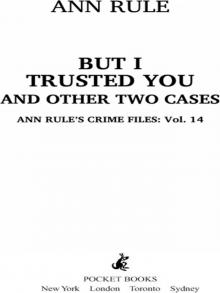 But I Trusted You: Ann Rule's Crime Files #14
But I Trusted You: Ann Rule's Crime Files #14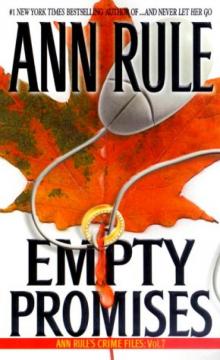 Empty Promises
Empty Promises Dead by Sunset
Dead by Sunset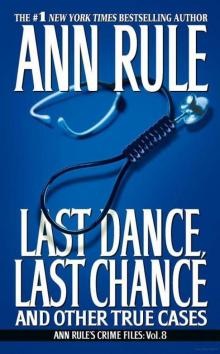 Last Dance, Last Chance
Last Dance, Last Chance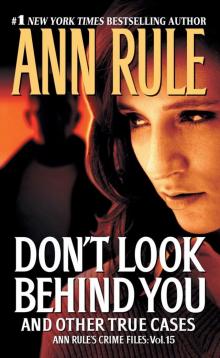 Don't Look Behind You
Don't Look Behind You